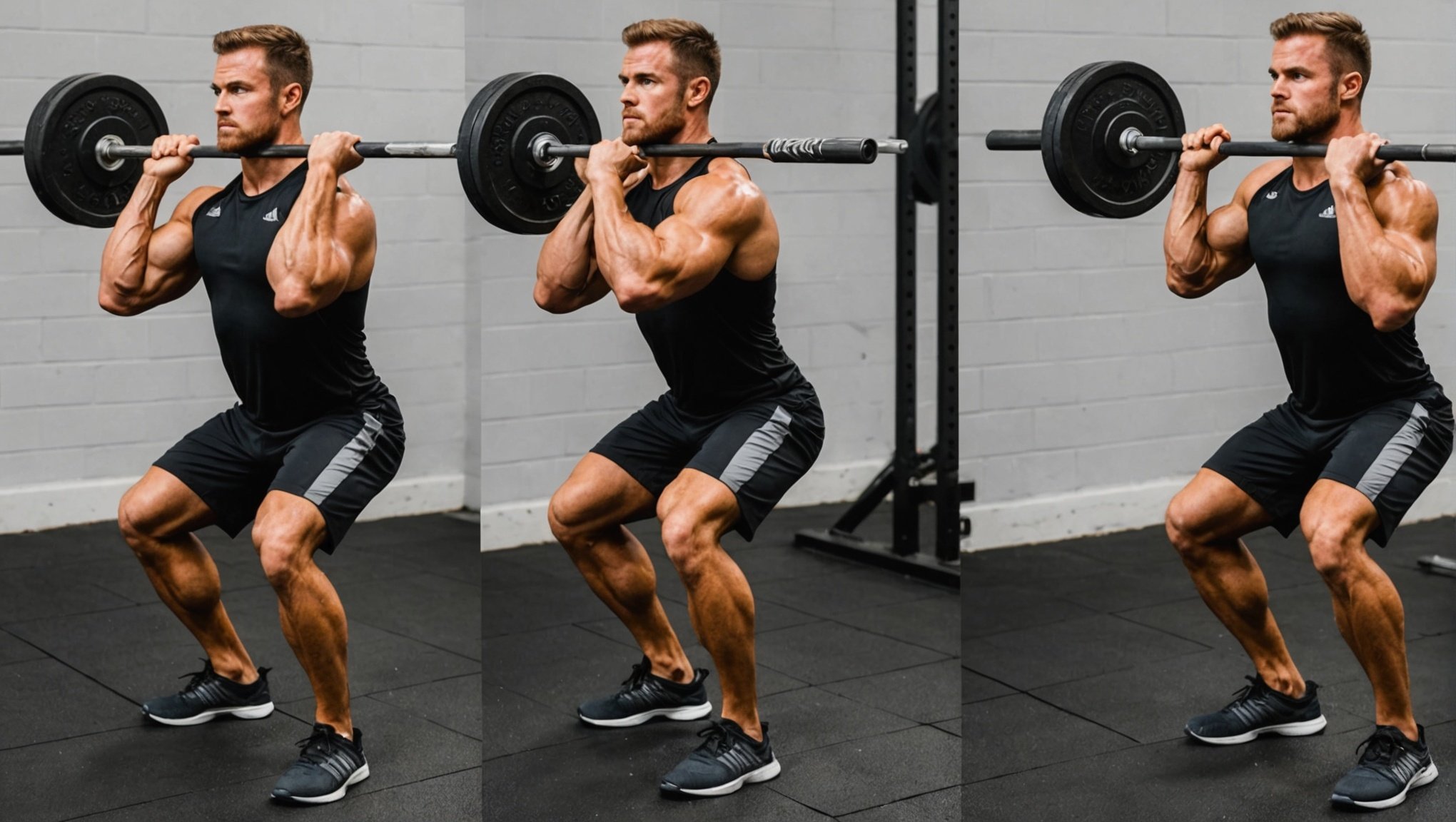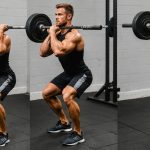Squats, a cornerstone of strength training, are a compound exercise engaging several muscle groups in the lower body. However, the nuanced differences between front squats and back squats can lead to varied muscle activation and outcomes. This article will dissect these variations in detail, offering insights to optimize your workout for specific muscle building objectives.
Understanding the Basic Movements of Squats
To comprehend the variations in muscle activation between front and back squats, we first need to understand the basic movement involved in squatting. Both these squats are compound exercises that primarily engage the lower body muscles.
Topic to read : What are the physiological impacts of sauna use post-resistance training?
A squat is a functional exercise mimicking the human movement of sitting down and standing up. The prime movers in this exercise are the quadriceps (quads) and the gluteus maximus. The secondary muscles, such as the hamstrings, adductor group, calves, and the muscles of the lower back, are also significantly engaged.
Whether you perform a front or back squat, the primary movement remains the same. The difference arises from the position of the barbell. In a front squat, the bar rests on your anterior deltoids, while in a back squat, the bar is placed either high on the trapezius muscle or lower on the posterior deltoids. This shift in bar placement can alter the biomechanics of the squat, leading to different muscle activation patterns.
Have you seen this : How can autoregulation be applied to manage fatigue in muscle building sessions?
Front Squats: More Emphasis on Quads
When we examine the muscle activation in front squats, the quads take the lead. This variation requires you to keep the torso more upright to maintain balance, which shifts a greater proportion of the load to the quads. A study published on PubMed supported this observation, revealing that front squats lead to significantly higher muscle activity in the quads compared to back squats.
Additionally, the front squat places less compressive forces on the knee joint, potentially offering a safer option for those with knee concerns. However, it requires a good deal of flexibility in the wrists and shoulders to hold the bar in the front position.
Back Squats: Greater Activation of Hip Muscles
In contrast, back squats can lead to greater activation of the hip muscles, including the gluteus maximus. As the barbell is positioned on your back in this variation, you naturally lean forward more during the squat. This shift engages the muscles of the posterior chain – essentially the hamstrings and glutes – to a larger extent.
A PubMed study confirmed these findings by indicating a higher muscle activation in the gluteus maximus during back squats compared to front squats. Moreover, this variation might be more comfortable for those with limited mobility in the wrists and shoulders, as it requires less flexibility in these areas.
Selecting the Right Squat for Your Goals
When it comes to choosing between front and back squats, the right choice depends on your fitness goals and bodily capabilities. If your objective is to develop quads predominantly, front squats should be your go-to exercise. On the other hand, if you want to focus more on your hips and glutes, back squats might serve you better.
Remember, it’s not about one being superior to the other. Both front and back squats are equally effective in building strength and muscle mass in the lower body. It’s about understanding your body, acknowledging its strengths and limitations, and adapting your workout to suit your specific needs.
Incorporating Squat Variations into Your Fitness Routine
Incorporating both front and back squats into your workout routine can provide a comprehensive approach to lower body strength training. However, it’s essential to master the correct form for both exercises to avoid injuries.
A well-rounded workout routine should ideally include both squat variations. This can help engage all the lower body muscles effectively, giving you a balanced workout. Also, alternating between the two can prevent monotony and keep your workouts interesting.
While the preference between front and back squats can be subjective, understanding the differences in muscle activation can help optimize your workout strategy. This knowledge can empower you to make educated decisions about your strength training routine and ultimately, achieve your fitness goals more effectively.
Remember to always listen to your body and consult a fitness professional if necessary to ensure that you are performing these exercises correctly. After all, the road to fitness is not a sprint, but rather, a marathon of consistent effort and smart choices.
Advantages and Disadvantages of Front and Back Squats
Understanding the benefits and challenges of both front squats and back squats is key to deciding which squat variation will fit best into your fitness routine.
Front squats are unique in their ability to effectively target the quads. This muscle activation can lead to significant muscle growth in the front of the lower body. However, one potential disadvantage of the front squat is that it requires a strong upper back and good flexibility in the wrists and shoulders. Those with limited mobility in these areas may find it difficult to hold the barbell securely across the anterior deltoids.
In contrast, the back squat can engage the gluteus maximus and hamstrings to a greater extent than the front squat. Those seeking to strengthen the posterior chain, or back of the lower body, may prefer this squat variation. Back squats, whether performed with a high bar or low bar placement, allow for a wider range of motion and actually permit lifting heavier weights than front squats. This can be a significant advantage for those aiming for muscle growth and strength gains. However, back squats place more stress on the lower back and knees, which could lead to injury if not performed correctly.
As always, each squat variation has its own unique advantages and challenges, and the best choice will depend on your individual fitness goals and abilities.
Conclusion: Achieving Balance in Your Workout Routine
In conclusion, both front squats and back squats are invaluable additions to any strength training routine. They engage different muscle groups in the lower body and can be used to target specific areas for muscle growth. Whether you choose to perform front squats or back squats will largely depend on your personal fitness goals and bodily capabilities.
Front squats activate the quads to a greater extent and may be the preferred option for those seeking to strengthen the front of the lower body. Conversely, back squats provide higher muscle activation in the gluteus maximus and hamstrings, making them an excellent choice for those wishing to target the posterior chain.
However, it’s crucial to keep a balanced approach in your training. Incorporating both squat variations into your routine can provide you with a comprehensive, full-body workout. Slight differences in muscle activation between the two can be leveraged to your advantage, helping you to achieve your fitness goals quicker.
Remember, achieving your fitness goals is not just about doing the right exercises, but also about understanding how these exercises affect your body. With this knowledge, you can make informed decisions and tailor your workouts to suit your specific needs. Always be sure to listen to your body, maintain proper form, and consult with a fitness professional if necessary. After all, fitness is a journey and every step you take towards understanding your body brings you closer to your goals.











